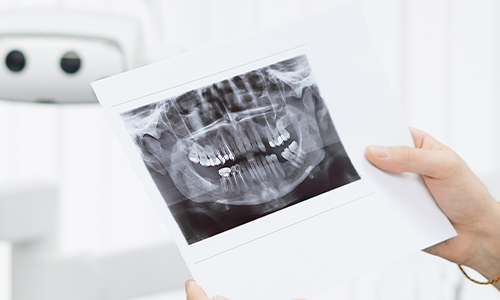What is Dental Bone Resorption?
While searching dental implants as a dental restoration option you have probably come across the term “dental bone resorption.” You must be wondering what is bone resorption, how to fix bone resorption, and how it’s related to dental implants.
With increasing age, the bones of the human body continually remodel themselves by natural processes – resorption (removal/loss of existing bone through osteoclasts) and ossification (addition of new bone where it needs to be reinforced by osteoblasts). This process is important for the well-being of an individual. In young children, when there is loss of deciduous teeth, it’s the bone resorption that breaks down the damaged or weakened bone tissue to be reabsorbed in the body to create enough space for the permanent adult teeth to emerge.
About Dental Bone Resorption
Dental bone resorption or jawbone deterioration occurs when there is loss of natural tooth and no roots are remaining to anchor or stimulate the surrounding jawbone. If ignored for long, it can lead to the collapse of the lower facial structure, usually causing a reduction in the vertical dimension of the jaw contour and providing a pinched appearance to the smile. There is also a more pointed chin appearance, premature wrinkling around the mouth, and thinning of lips.
Types of Dental Bone Resorption (Based on the Site)
- External Bone Resorption- It develops in the outer area of the tooth where the jawbone connects to the tooth roots. This can be seen as pink spots on the gums, appearing around the tooth.
- Internal Bone Resorption- It develops inside the tooth, usually due to chronic inflammation of the tooth’s pulp. This is generally an asymptomatic ailment.
Causes of Dental Bone Resorption
- Tooth Extractions- If the adult tooth is removed and the space created in the smile is left vacant, the jawbone in that area will not receive stimuli, hence osteoclasts will continue to break the jawbone and osteoblasts remain non-functional or work at a slower rate. Thus bone resorption happens in addition to jawbone loss.
- Tooth Trauma- If the tooth gets accidentally injured/damaged or falls out due to severe tooth decay, bone resorption and jawbone deterioration occur due to loss of stimulus and impact from the surrounding teeth. Damages may also happen due to long-term tooth grinding and tooth bleaching.
- Gum Disease- When there is a build-up of dental plaque and increased inflammation along the gum line, this is a sign of gingivitis. This is a type of gum infection that causes the breakdown of surrounding tissues and bone that holds the tooth in its place. This causes permanent damage to the jawbone including loss of tooth and eventually bone resorption.
- Osteoporosis- It is a bone disease characterized by brittle, less dense, and extremely fragile bones increasing the risk of osteoporotic fracture. This may even be associated with periodontal tooth loss.
- Prolonged Use of Orthodontic Appliances Like Braces- A vertical bone loss can take place in the interproximal area after orthodontic treatment is performed with or without tooth extraction.
Symptoms of Bone Resorption
- Swollen and red gums
- Brittle teeth that can easily chip
- Pinkish or dark discoloration
- Tooth having cavity-like holes
- Pain stemming from the damaged root, tooth pulp, or crown
- Unusual spacing between the teeth.
How to Fix Bone Resorption?
Although there are many ways to replace missing teeth like dentures and bridgework, only dental implants can solve the problem of bone resorption and help secure the smile.
Dental implants are titanium screws that are placed by oral surgeons into the jawbone where one or more teeth are missing to act as artificial tooth roots. After their placement, healing takes place wherein the jawbone grows around the metal post and fuses with it (a process called osseointegration). The implants create a strong foundation for the replacement teeth (dental crown, denture, or bridges), hence providing stable support on par with real teeth. This halts the dental bone resorption process and prevents the jaw from changing shape, thereby maintaining its structure for a lifetime. With dental implants, the patients no longer experience gum and tooth problems that arise from bone loss over time and chewing and biting improves. Thus, the patient’s oral health and overall appearance are protected.
How Do Dental Implants Help with Bone Loss?
If bone resorption goes untreated, there is a significant loss of jawbone mass. Dental implants require your jawbone for support. Hence, people who do not have enough jawbone density would require bone grafting before the placement of dental implants.
Can you have Dental Implants with Bone Loss?
Yes, people with severe bone loss are eligible to receive dental implants. If you are seeking options for the replacement of your lost tooth or teeth, and want to know more about dental implants, then give us a call, and feel free to visit our website!
At First Point Dental, we have dental experts who have been performing dental implant surgery for many years with great success, and we would be happy to help you reach your dental goals. We look forward to welcoming you to our dental clinic!

